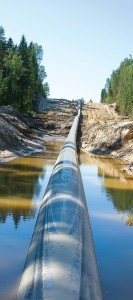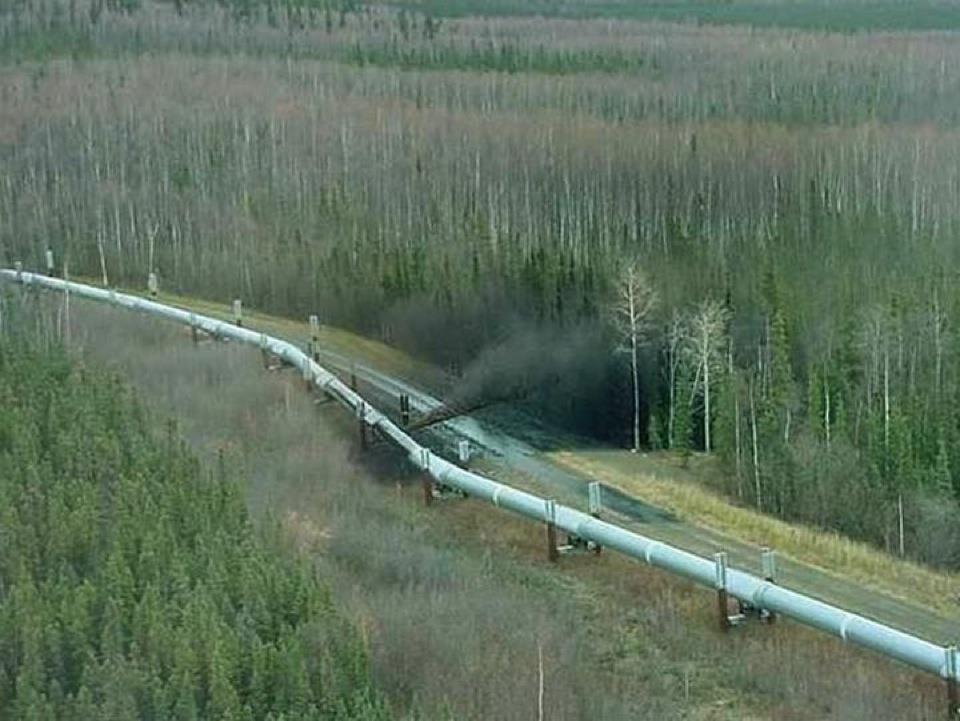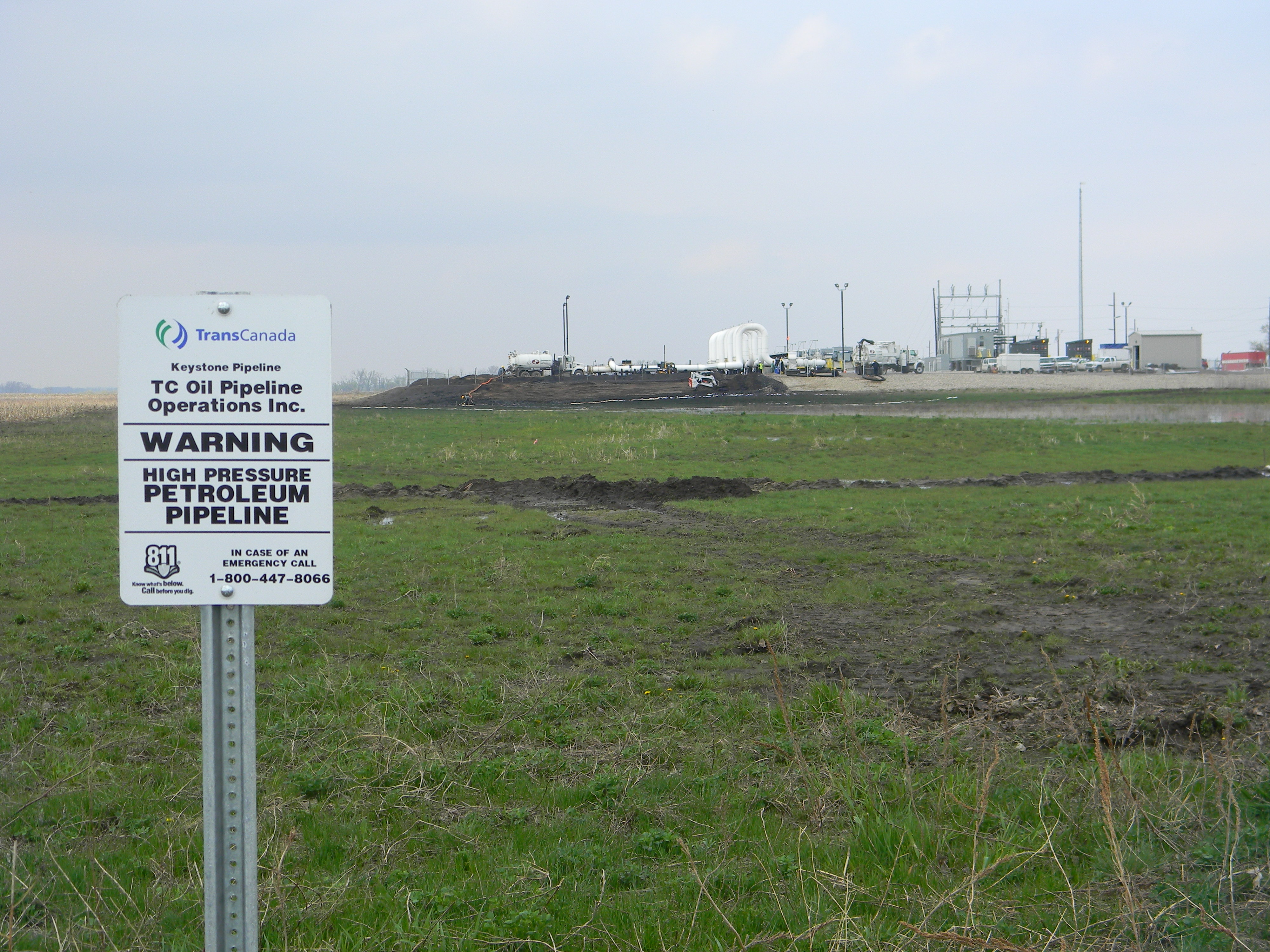TransCanada had announced start up dates for the southern section of Keystone XL for January 3rd, then changed that to mid to late January, then announced startup began on Saturday, December 7th.
 Following reports of hundreds of flaws that could lead to spills in the southern segment of the Keystone XL, Texas residents and environmentalists today called for the Pipeline and Hazardous Materials Safety Administration (PHMSA) to halt the start-up of the pipeline.
Following reports of hundreds of flaws that could lead to spills in the southern segment of the Keystone XL, Texas residents and environmentalists today called for the Pipeline and Hazardous Materials Safety Administration (PHMSA) to halt the start-up of the pipeline.
According to media reports, on Saturday, TransCanada started pumping oil through Keystone XL’s southern leg, which runs nearly 500 miles from Oklahoma to the Texas coast.
“Pumping highly toxic tar sands crude through that line is an irresponsible act that shows a complete disregard for both public and environmental safety,” said Tom “Smitty” Smith, director of Public Citizen’s Texas office.
The grassroots organization Nagadoches County STOP, which has campaigned against the pipeline’s southern segment, said: “The problems associated with the pipeline’s construction directly impact our sense of security, the lives of our children, and where we live. For those of us along the pipeline, the struggle is personal. We have to protect the places and people we love. There have been far too many problems with this pipeline, and it’s running through our community without any clear, local preparation for addressing a spill or leak.”
In two September warning letters to TransCanada, PHMSA identified hundreds of problems with the pipeline. In one of the letters, PHMSA said that nearly 50 percent of the welds – 205 out of 425 – in a single section of the southern segment needed repairs.
In another letter, PHMSA said 98 sites were excavated because of other problems with the pipe, and rocky backfill used around the pipeline may have caused dents found in the pipe.
In its own study, Public Citizen documented that TransCanada had undertaken 125 excavations for possible “anomalies,” welds, dents and other problems that could lead to leaks and spills.
PHMSA’s Freedom of Information Act (FOIA) office has not yet provided records in response to multiple requests for information about those flaws and any attempts to correct them, but it did not meet the requests before the weekend pipeline startup.
In an email to Public Citizen, PHMSA FOIA office said it would take weeks to process Public Citizen’s request.
“Now the pipeline is being filled, and we have absolutely no idea whether it’s safe,” Smith said. “Both PHMSA and Congress have shirked their responsibility to the public and the environment. There were 14 spills along the first phase of Keystone XL in the very first 14 months of its operation. Congress and PHMSA should have taken it upon themselves to make sure it doesn’t happen again.”
The southern segment crosses 631 streams and rivers in Texas alone, and it is located within miles of many cities and towns.
Public Citizen twice asked Congress to urge PMHSA to make sure that the flaws had been corrected and conduct other inspections to ensure that the pipeline is safe. “Now is the time for Congress to act before commercial operations begin,” said Smith.
![beforenafter1[1]](http://texasvox.org/wp-content/uploads/2013/02/beforenafter11.jpg?w=300)


 Tar sands oil makes conventional oil look clean by comparison, as it produces 3.2-4.5 times more the carbon footprint than conventional fuel. If that weren’t bad enough cleaner fuels such as natural gas, which otherwise might be used to generate electricity, are wasted in the process of creating more dirty energy from tar sands. Tar sands oil is a type of bitumen deposited in a semi solid form whose extraction is an extremely energy intensive project. For every third barrel of oil extracted one has effectively been consumed by the process. The process of tar sands oil extraction has left vast tracts of land barren with little vegetation as it is strip mined; while only 10%, of what is excavated, is oil. While some water is recyclable, the remaining toxic water is diverted to the euphemistically named “tailing ponds”. There are 2.5-4 barrels of water dumped into these toxic lakes for every barrel of oil extracted. These toxic “ponds” are actually very large; some are even visible from space.
Tar sands oil makes conventional oil look clean by comparison, as it produces 3.2-4.5 times more the carbon footprint than conventional fuel. If that weren’t bad enough cleaner fuels such as natural gas, which otherwise might be used to generate electricity, are wasted in the process of creating more dirty energy from tar sands. Tar sands oil is a type of bitumen deposited in a semi solid form whose extraction is an extremely energy intensive project. For every third barrel of oil extracted one has effectively been consumed by the process. The process of tar sands oil extraction has left vast tracts of land barren with little vegetation as it is strip mined; while only 10%, of what is excavated, is oil. While some water is recyclable, the remaining toxic water is diverted to the euphemistically named “tailing ponds”. There are 2.5-4 barrels of water dumped into these toxic lakes for every barrel of oil extracted. These toxic “ponds” are actually very large; some are even visible from space.



Massive Opposition to Tar Sands Pipeline
Posted in Tarsands, tagged comments, keystone, keystone xl, permit, pipeline, spill, state department, Tar Sands, tarsands, Texas, transcanada on June 9, 2011 |
Check out KETK for their recent story on the spill and overview of the project.
The State Department will decide soon on whether or not to grant this project the necessary “presidential permit” it needs for construction from Canada down through the central US. The future of energy lies in renewable energy – and that is where we should be investing in new infrastructure. This pipeline takes us in exactly the opposite direction towards a dirtier and more destructive fossil fuel. Contact your congressman and ask them to pressure the White House and State Department not to grant this permit.
http://whoismyrepresentative.com/
Read Full Post »